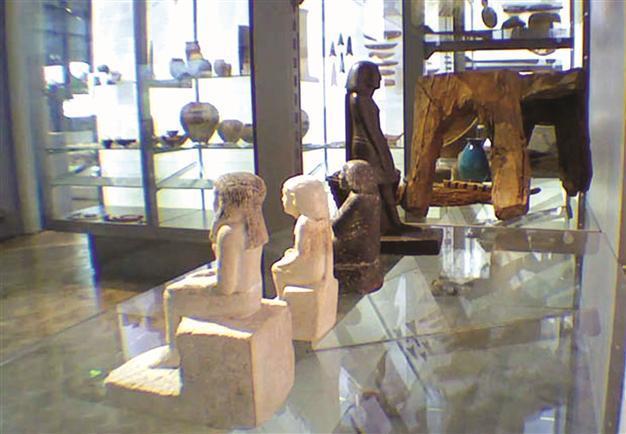Riddle of rotating Egyptian statue solved by scientist
LONDON - Reuters

An ancient Egyptian statue can rotate on its glass shelf, seemingly of its own free will. But an engineer discovered that vibrations caused the rotation.
For months, curators at a British museum had been wondering how an ancient Egyptian statue in a sealed display cabinet had been able to rotate on its glass shelf, seemingly of its own free will.Rumors abounded that it was cursed by an Egyptian god, or that the spirit of its owner had entered the figurine, causing it to shudder.
Others put forward more prosaic explanations, suggesting a magnetic field was behind the statue’s movements. But now, a British engineer has solved the riddle, discovering that miniscule vibrations from traffic and footsteps from passersby were causing the 3,800-year-old stone figurine to spin.
“The statue was rotating due to vibrations entering the display case,” Steve Gosling said on Nov. 20. “We installed an accelerometer and found that vibrations from both road traffic and footfall within the museum were the cause.”
Gosling, who made his discovery as part of an ITV television series called “Mystery Maps,” said the bulk of the weight of the 25 cm statue was at one end, meaning it was off-balance and especially susceptible to vibrations.
“With an object of such hard material on a glass shelf, the level of friction between the two materials is very low. It doesn’t take a lot to make it move,” he said.
















